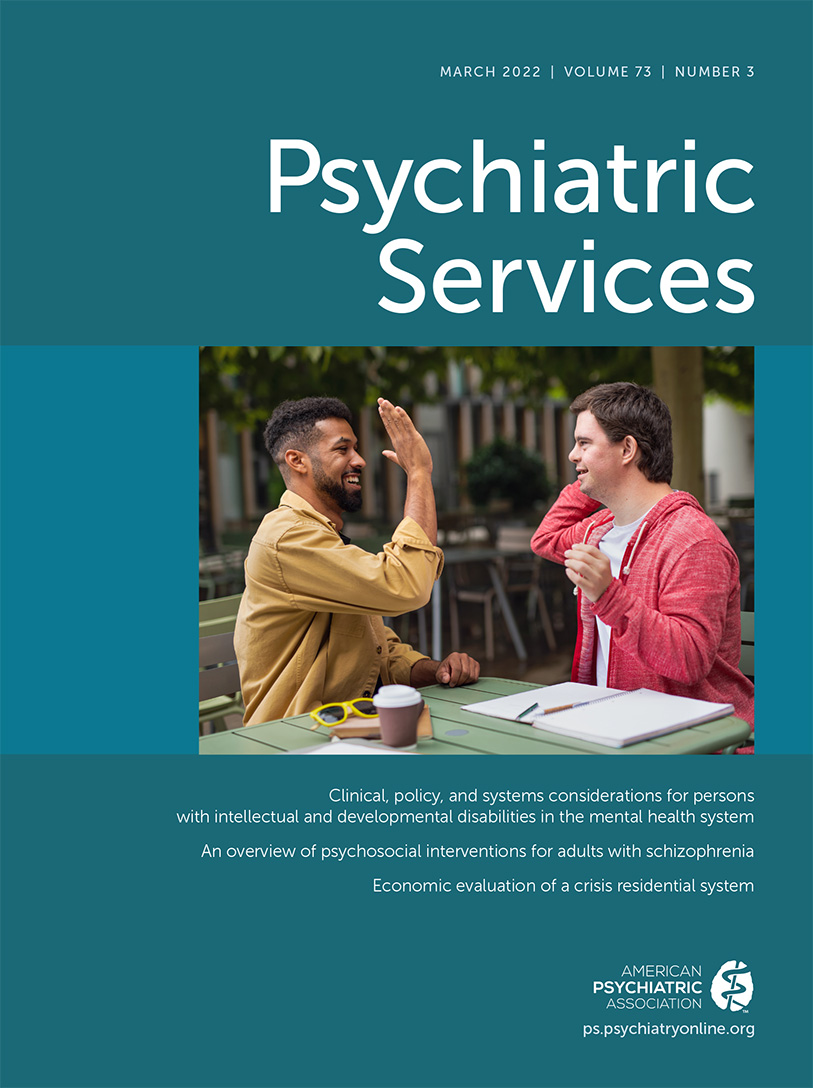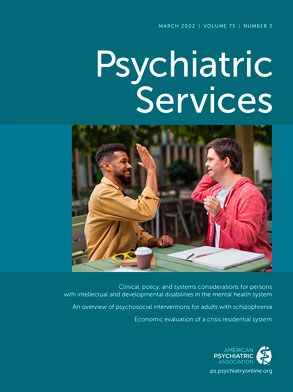Integral Care has operated as the Local Mental Health and Intellectual and Developmental Disability Authority (LMHA) for Austin-Travis County, Texas, since 1967. With a mission of improving the lives of people affected by behavioral health and developmental and/or intellectual challenges, this LMHA supports the health and well-being of approximately 30,000 children, youths, and adults annually. In partnership with community organizations, Integral Care provides a crisis hotline, mobile crisis response, residential treatment, integrated primary and behavioral health care, holistic prevention and wellness programs, housing services and wraparound rehabilitation support, and reentry services.
During fall 2019, Integral Care’s board of trustees asked its leadership to evaluate the LMHA’s value to the community. The leadership subsequently contracted researchers at the University of Texas at Austin’s Dell Medical School and Lyndon B. Johnson School of Public Affairs to conduct the evaluation. On the basis of data availability and because of the significance of a community-based, crisis residential model to an ongoing regional effort to redevelop the state psychiatric hospital system (
1), the group selected for evaluation one of Integral Care’s key programs—a 16-bed crisis residential facility in Austin, Texas (the Inn). Value was operationalized as the cost savings to the health care system from using the Inn, instead of hospitalization, to treat individuals with acute psychiatric illness. This column provides the results of the economic evaluation of the Inn.
The Inn
Opened in 1995, the Inn provides short-term psychiatric crisis care in a safe, voluntary, residential environment for adults recovering from a mental health crisis. The Inn was created to provide a less restrictive and more efficient alternative care environment than inpatient hospitalization and is one of the core crisis services in a best practice continuum of care outlined by the Substance Abuse and Mental Health Services Administration (
2) and the National Council for Behavioral Health (
3). The Inn is staffed by an interdisciplinary treatment team that consists of a part-time advanced practice nurse; a full-time program manager, who also serves as the program’s licensed counselor; full-time case managers; and registered and licensed vocational nurses as well as mental health technicians who are onsite 24 hours a day. The Inn also has a full-time authorization specialist who verifies insurance and provides administrative support. Services provided include crisis assessment, crisis stabilization and observation, medication therapy, individual and group therapy, nursing services, case management, discharge planning, and linkage to ongoing community support. The Inn can serve individuals who are uninsured or homeless, do not speak English, or have criminal justice involvement, substance use issues, and/or medical needs. Because the Inn is a nonhospital setting, unstable medical and detoxification needs must be treated prior to admission.
As required by state law, Integral Care and other LMHAs across Texas use the Adult Needs and Strengths Assessment (
4) to determine the appropriate level of care for each patient. Most individuals are referred to the Inn through Integral Care’s Psychiatric Emergency Service, a walk-in crisis clinic colocated with the Inn that offers individuals treatment alternatives to hospitals, emergency departments, and sometimes jail. Approximately 3% of Inn patients are transferred to a psychiatric hospital during their episode of care.
The Inn is credentialed by the State of Texas as a crisis residential unit and is held to a standard of care (including staffing requirements) outlined in the Texas Administrative Code (
5). The Inn is also accredited by the Joint Commission.
Economic Evaluation
Our economic evaluation of the Inn was conducted from the perspective of the health care system. The study period was 3 years (FY2017–FY2019), and the sample was the census of all people who stayed at the Inn during the study. During this time, the Inn provided care to 1,371 unique individuals who combined for 1,730 episodes of care, covering 15,328 bed-days. Eleven Inn episodes of care were excluded from analyses because of outlying lengths of stay (LOSs) exceeding 1 month, leaving 1,364 unique individuals with 1,719 episodes of care covering 14,837 bed-days in the final sample.
All costs were resource costs (not prices or charges) adjusted to 2019 U.S. dollars by using the “medical care in U.S., city average, all urban consumers” series of the Consumer Price Index. We obtained all health service utilization data for the analyses (including residential, inpatient, outpatient, emergency department, and emergency medical services) from Integral Care and Central Texas’s regional health information exchange. We calculated resource costs by multiplying health service utilization data (e.g., number of bed days, number of clinic visits) by appropriate unit costs. Unit costs were obtained from the Healthcare Cost and Utilization Project (
6), Medical Expenditure Panel Survey (
7), Austin State Hospital (
1) and Integral Care.
We estimated the annual cost savings to the health care system from using the Inn instead of local hospitals for individuals with acute psychiatric crises by comparing the actual episodic costs of individuals who resided at the Inn during the study period to estimated episodic costs had those individuals been treated instead at a local psychiatric or community hospital. We assumed that the cost savings from using the Inn occurred only during the time the individuals resided in the facility. This assumption was based on a systematic review (
8) of cost comparison studies of acute residential programs similar to the Inn that found no significant cost difference for postdischarge follow-up care. All analyses for the present study were performed with Stata, version 14. The University of Texas at Austin Office of Research Support and Compliance determined that the work did not constitute regulated research, so no review by an institutional review board was required.
Demographic Characteristics of the Sample
The mean±SD age of the sample (N=1,364) was 39±12 years. Of participants, 68% (N=933) were male. Approximately half of the individuals were non-Hispanic, non-African American (51%, N=702); 26% (N=351) were non-Hispanic, African American; and 20% (N=276) were Hispanic. The mean annual income of the sample was $4,650±$6,304, and the majority of participants (N=1,224, 89%) lived below the federal poverty level. Fifty-four percent (N=742) of the individuals were experiencing homelessness, 26% (N=354) were not experiencing homelessness, and 15% (N=209) were marginally homeless. Payer mix was a combination of state general revenue (N=1,091, 80%), Medicaid (N=256, 19%), and miscellaneous other sources (N=17, 1%).
Estimated Savings
We estimated that the Inn saved the health care system between $1.87 and $2.82 million annually during FY2017–FY2019. The average cost per episode during the study was $3,121 (mean LOS=8.63 days), whereas the estimated average episodic cost at a local psychiatric or community hospital for a patient with an acute psychiatric diagnosis was $6,382 (mean LOS=8.33 days × $766.17 per day) (
1) and $8,035 (mean LOS=8.74 days × $919.33 per day) (
6), respectively. A total of 1,719 episodes were treated at the Inn during the 3-year study, so if all the individuals treated at the Inn had instead been treated at a local psychiatric hospital, the total extra cost to the health care system would have been $5.61 million (1,719 × [$6,382–$3,121]), or $1.87 million annually ($5,605,659 ÷ 3). Similarly, if all the individuals treated at the Inn had instead been treated at a local community hospital, the total extra cost to the health care system would have been $8.45 million (1,719 × [$8,035–$3,121]), or $2.82 million annually ($8,447,166 ÷ 3).
Discussion
We estimated the “system efficiency” (i.e., cost savings) gained by the health care system from using the Inn versus acute psychiatric hospitalization for people with acute psychiatric crises. The range of estimated cost savings ($1.87 million to $2.82 million annually) was due to different assumptions about what would happen to individuals if the Inn did not exist. Specifically, we estimated the Inn saved the health care system $1.87 million annually versus treatment in a local psychiatric hospital and $2.82 million annually versus treatment in a community hospital. Either way, using the Inn (as opposed to local hospitals) for people with acute psychiatric episodes clearly bestowed substantial cost savings to the local health care system. Because the average LOSs were similar across the three settings in this study (Inn, psychiatric hospital, community hospital), efficiency gained by using the Inn resulted from lower per diem costs (e.g., lower overhead and operating expenses).
Importantly, the estimated cost savings to the local health care system were not necessarily enjoyed by the Inn. Indeed, one of the major challenges in redesigning a fragmented health care system is that savings in one component often result in new costs to another. Consequently, despite an overall reduction in costs, the increased expenses in one setting may create a barrier to implementation. As system redesigns move forward, financial structural changes will have to occur to incentivize changes throughout the care pathway.
Our study had three main limitations. First, we did not include any personal outcomes. Fortunately, numerous studies (
8) comparing acute psychiatric hospitalization with short-term residential alternatives have consistently shown that, compared with hospitalization, programs like the Inn typically have similar clinical outcomes and greater patient satisfaction. Still, it is impossible to know with certainty whether people treated at the Inn would have had similar outcomes had they instead been treated in acute psychiatric hospital settings. Second, the study was conducted in a single acute residential program located in Austin, Texas, thereby limiting the generalization of the findings. Third, in the absence of the Inn, we assumed individuals would have been treated at a local hospital for their acute crisis. If some of these individuals had instead gone to jail or remained untreated, then our results likely underestimated the community value of the Inn, because the “intersection between the mental health and legal systems is fraught with inefficiencies, delays, unnecessary expenses and suboptimal outcomes, inadequately serving both individuals seeking care and the court systems” (
1). Untreated acute mental illness imposes substantial costs to the health care system and society in the form of substance use disorders, overdose, suicide, health care, lost productivity (for individuals with mental illness and their caregivers), and interactions with the criminal justice system. For example, studies show that jails can have difficulties providing psychiatric support, thereby “extending people’s illnesses, contributing to poor clinical outcomes and increasing both local (jails) and state (hospitals) taxpayer costs” (
1). In Austin State Hospital’s service area, unmet mental health needs were responsible for $93 million in emergency department costs; $85 million in jail costs; and an additional $9 million in costs for mental health court, probation, and law enforcement during 2015–2016 (
1). More generally, in a recent systematic review, the Government Accountability Office (
9) reported that a majority of reviewed studies found higher mental health care costs associated with untreated (compared with treated) behavioral health conditions, and the National Alliance on Mental Illness (
10) reported that untreated mental illness costs the United States as much as $300 billion each year.
Conclusions
We found that the Inn bestowed substantial efficiency benefits to the local health care system. Future work should focus on how providers can use these findings to advocate within the local community to direct public spending into supporting and expanding cost-saving crisis residential programs like the Inn to improve the effectiveness and efficiency of mental health care.

